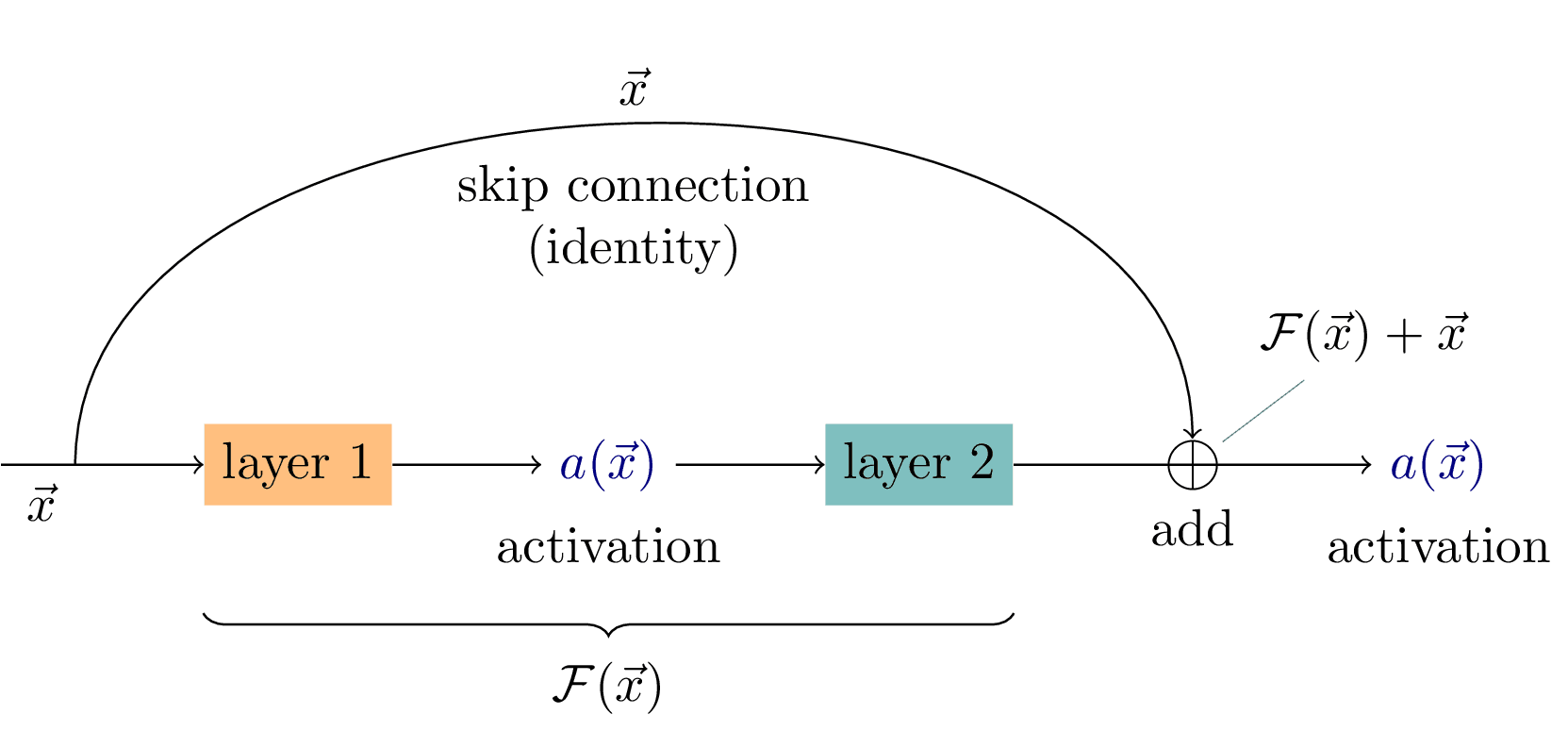Skip Connection
Illustration of skip connection in a residual block. Inspired by the ResNet paper. arxiv:1512.03385

Download
Code
skip-connection.typ (105 lines)
skip-connection.tex (23 lines)
Illustration of skip connection in a residual block. Inspired by the ResNet paper. arxiv:1512.03385
